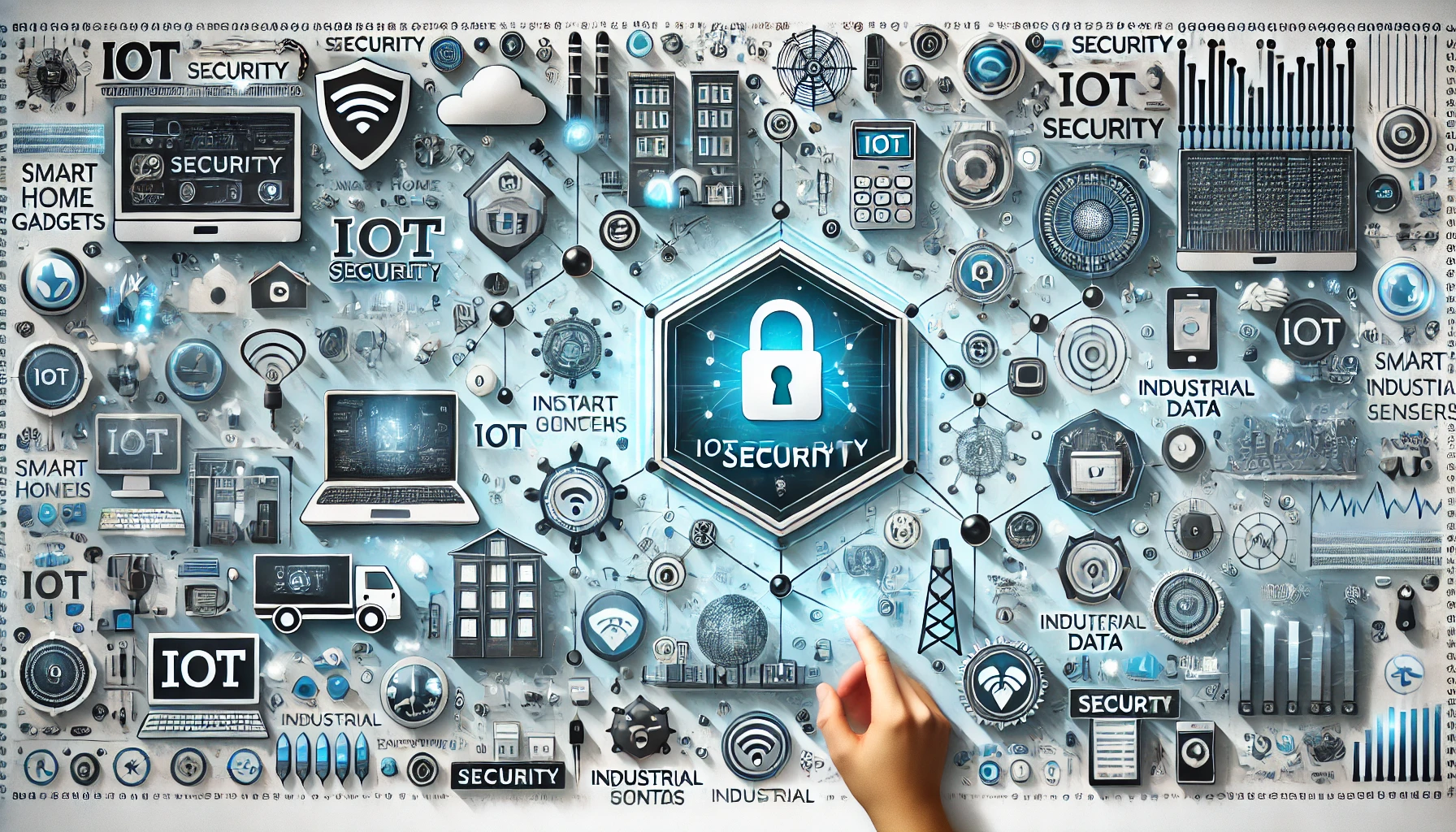
The Internet of Things (IoT) represents a revolutionary shift in how devices connect, communicate, and transfer data over a network. While IoT offers immense benefits and opportunities, it also introduces significant security challenges. This comprehensive guide delves deep into IoT Security, exploring its principles, vulnerabilities, best practices, standards, tools, and future trends to help you secure IoT ecosystems effectively.
Introduction to IoT Security
The Internet of Things encompasses a vast network of interconnected devices, sensors, and systems that collect and exchange data. From smart homes and wearable devices to industrial automation and healthcare systems, IoT is transforming how we live and work. However, the proliferation of IoT devices has expanded the attack surface for cyber threats, making IoT Security a critical concern for individuals, businesses, and governments alike.
The Evolution of IoT and Its Impact on Security
- Early Adoption: Initial IoT devices focused on convenience, often neglecting security.
- Rapid Expansion: The number of IoT devices has exploded, with estimates of over 30 billion devices worldwide.
- Complex Ecosystems: IoT systems now involve diverse devices, platforms, and protocols, increasing complexity.
- Security Incidents: High-profile attacks have highlighted the vulnerabilities inherent in IoT systems.
- Regulatory Responses: Governments and organizations are introducing regulations and standards to enhance IoT security.
Why IoT Security is Crucial
- Data Protection: IoT devices collect sensitive personal and organizational data.
- Operational Integrity: Compromised devices can disrupt critical services and operations.
- Safety Risks: In sectors like healthcare and automotive, IoT security is directly linked to human safety.
- Economic Impact: Cyberattacks can result in significant financial losses.
- Regulatory Compliance: Organizations must adhere to laws and regulations concerning data security and privacy.
Core Principles of IoT Security
- Confidentiality: Ensuring that data is accessible only to authorized parties.
- Integrity: Maintaining the accuracy and consistency of data and system configurations.
- Availability: Guaranteeing that devices and services are available when needed.
- Authentication: Verifying the identity of users and devices.
- Authorization: Granting permissions based on authenticated identities.
- Non-Repudiation: Ensuring actions cannot be denied after they have occurred.
- Accountability: Tracking and logging activities for auditing purposes.
Common IoT Vulnerabilities and Threats
1. Weak Authentication and Authorization
- Default Credentials: Many devices ship with default usernames and passwords.
- Poor Password Policies: Lack of complexity and password rotation.
- Lack of Multi-Factor Authentication: Single-factor authentication is easier to compromise.
2. Insecure Communication Protocols
- Unencrypted Data Transmission: Data sent in plain text can be intercepted.
- Weak Encryption Algorithms: Use of outdated or weak encryption methods.
- Lack of Certificate Validation: Failure to validate SSL/TLS certificates properly.
3. Lack of Secure Firmware Updates
- Infrequent Updates: Manufacturers may not provide regular security patches.
- Insecure Update Mechanisms: Updates delivered without authentication or over insecure channels.
- No Update Capability: Some devices cannot be updated once deployed.
4. Inadequate Physical Security
- Physical Access: Devices may be accessible to unauthorized individuals.
- Tampering Risks: Lack of tamper-evident features.
5. Insufficient Data Protection
- Data Storage Vulnerabilities: Data stored on devices may not be encrypted.
- Cloud Security Issues: Data transmitted to and stored in the cloud may be at risk.
IoT Security Architecture and Design
A robust IoT security strategy involves multiple layers:
Device Layer Security
- Secure Hardware Components: Use of trusted platform modules (TPMs).
- Firmware Integrity: Secure boot processes to prevent unauthorized firmware.
- Device Identity Management: Unique identifiers and secure credentials.
Network Layer Security
- Secure Communication Protocols: Implementing protocols like TLS/SSL.
- Network Access Control: Limiting device communication to necessary networks.
- Firewalls and Intrusion Detection: Monitoring network traffic for anomalies.
Application Layer Security
- Input Validation: Preventing injection attacks through proper input handling.
- API Security: Securing application programming interfaces against unauthorized access.
- Application-Level Encryption: Protecting data at the application level.
Cloud and Backend Security
- Authentication and Authorization: Robust mechanisms for user and device access.
- Data Encryption: Encrypting data at rest and in transit.
- Security Monitoring and Logging: Continuous monitoring for suspicious activities.
Best Practices for Securing IoT Systems
Secure Boot and Hardware Root of Trust
- Purpose: Ensures that devices boot using only authorized software.
- Implementation: Use cryptographic signatures to verify firmware.
Strong Authentication Mechanisms
- Multi-Factor Authentication (MFA): Adding layers of security beyond passwords.
- Certificate-Based Authentication: Using digital certificates for device authentication.
Encryption and Data Protection
- End-to-End Encryption: Encrypting data from the device to the backend systems.
- Secure Key Management: Protecting cryptographic keys from unauthorized access.
Regular Firmware and Software Updates
- Over-the-Air (OTA) Updates: Secure mechanisms to update devices remotely.
- Automated Patch Management: Ensuring timely application of security patches.
Network Segmentation
- Isolate IoT Devices: Separate IoT devices from critical network segments.
- Virtual LANs (VLANs): Use VLANs to control and limit network traffic.
Security by Design
- Threat Modeling: Identifying potential threats during the design phase.
- Secure Coding Practices: Adhering to coding standards that prioritize security.
- Security Testing: Incorporating security testing throughout the development lifecycle.
IoT Security Standards and Frameworks
OWASP IoT Project
- Focus: Provides guidelines and resources for IoT security.
- Key Components:
- IoT Top 10 Vulnerabilities
- Testing Guides
- Secure Coding Practices
NIST Cybersecurity Framework
- Focus: Offers a comprehensive framework for improving cybersecurity.
- Applicability: Can be tailored to IoT environments.
ETSI EN 303 645
- Focus: European standard for cybersecurity in IoT consumer devices.
- Key Requirements:
- No universal default passwords
- Implement a vulnerability disclosure policy
- Keep software updated
ISO/IEC 27030
- Focus: Guidelines for security and privacy in IoT.
- Status: Under development, aiming to provide international standards.
Tools and Technologies for IoT Security
IoT Security Testing Tools
- IoT Inspector: Analyzes firmware for vulnerabilities.
- Shodan: Search engine for internet-connected devices, useful for identifying exposed devices.
- Nmap: Network scanning tool to discover devices and services.
IoT Device Management Platforms
- AWS IoT Device Management
- Azure IoT Hub
- IBM Watson IoT Platform
Features:
- Device provisioning and authentication
- Remote monitoring and management
- Secure communication protocols
Blockchain and IoT Security
- Purpose: Enhances security through decentralized and immutable ledgers.
- Applications:
- Secure device authentication
- Data integrity verification
- Smart contracts for automated processes
Compliance and Regulatory Considerations
GDPR
- Applicability: Protects personal data of EU citizens.
- IoT Impact: Devices collecting personal data must comply with GDPR requirements.
HIPAA
- Applicability: Protects health information in the United States.
- IoT Impact: Medical IoT devices must ensure data privacy and security.
California IoT Security Law (SB-327)
- Focus: First U.S. state law mandating IoT security requirements.
- Key Requirements:
- Reasonable security features appropriate to the device.
- Unique preprogrammed passwords or user-generated authentication methods.
Challenges in Implementing IoT Security
Resource Constraints
- Limited Processing Power: Devices may lack capacity for robust security features.
- Battery Life: Security measures can consume additional power.
Heterogeneity of Devices
- Diverse Platforms: Varied hardware and software make standardization difficult.
- Compatibility Issues: Ensuring security measures work across different devices.
Scalability Issues
- Massive Device Numbers: Managing security for millions of devices is complex.
- Update Distribution: Deploying updates to all devices efficiently.
User Awareness and Behavior
- Lack of Security Knowledge: Users may not understand risks or how to mitigate them.
- Neglecting Updates: Users may ignore or delay applying security updates.
Real-World Case Studies
Case Study 1: Mirai Botnet Attack
- Background: In 2016, the Mirai botnet infected IoT devices to launch massive DDoS attacks.
- Vulnerabilities Exploited:
- Default credentials on devices.
- Insecure Telnet services.
- Impact:
- Disrupted major websites and services.
- Highlighted the need for better IoT security practices.
Case Study 2: Stuxnet Worm
- Background: A sophisticated worm targeting industrial control systems (ICS).
- Vulnerabilities Exploited:
- Zero-day vulnerabilities.
- Lack of network segmentation.
- Impact:
- Damaged nuclear facilities by manipulating industrial equipment.
- Demonstrated the potential physical consequences of cyberattacks.
Future Trends in IoT Security
Artificial Intelligence and Machine Learning
- Threat Detection: AI can analyze patterns to detect anomalies.
- Automated Response: Machine learning algorithms can respond to threats in real-time.
Edge Computing Security
- Decentralized Security: Processing data at the edge reduces reliance on central systems.
- Enhanced Privacy: Less data transmitted over networks reduces exposure.
5G and IoT Security
- Increased Connectivity: 5G will connect more devices at higher speeds.
- Security Enhancements: 5G introduces new security features but also new vulnerabilities.
Conclusion
Securing the Internet of Things is a complex but essential endeavor. As IoT devices become more integrated into our daily lives and critical infrastructures, the risks associated with their vulnerabilities grow exponentially. Implementing robust IoT security requires a multifaceted approach, encompassing secure design principles, best practices, adherence to standards, and continuous monitoring. By proactively addressing IoT security challenges, we can harness the full potential of IoT technologies while safeguarding data, privacy, and safety.
Frequently Asked Questions (FAQs)
Q1: What is the main difference between IoT security and traditional IT security?
A1: IoT security focuses on securing a diverse range of devices with varying capabilities, often resource-constrained, and connected over different networks. Traditional IT security primarily deals with securing standard computing devices like servers, desktops, and laptops within more controlled environments.
Q2: How can I secure my home IoT devices?
A2: Steps include changing default passwords, keeping firmware updated, using strong encryption (like WPA3 for Wi-Fi), segmenting your network (using guest networks for IoT devices), and disabling unnecessary features or services.
Q3: What role does encryption play in IoT security?
A3: Encryption protects data confidentiality and integrity by ensuring that only authorized parties can access and modify data. It is essential for securing data in transit and at rest within IoT systems.
Q4: Are there certifications for IoT security?
A4: Yes, certifications like the Certified Internet of Things Security Practitioner (CIoTSP) validate knowledge in IoT security principles and practices.
Q5: How does blockchain enhance IoT security?
A5: Blockchain can provide decentralized security mechanisms, enhancing data integrity and device authentication through immutable records and smart contracts.
References and Further Reading
- OWASP Internet of Things Project: OWASP IoT
- NIST Special Publication 800-183: Networks of ‘Things’
- ETSI EN 303 645: Cyber Security for Consumer Internet of Things
- ISO/IEC 27030: Security and Privacy for IoT
- Mirai Botnet Analysis: Understanding the Mirai Botnet
- Stuxnet Case Study: An In-Depth Look at Stuxnet
Stay Connected with Secure Debug
Need expert advice or support from Secure Debug’s cybersecurity consulting and services? We’re here to help. For inquiries, assistance, or to learn more about our offerings, please visit our Contact Us page. Your security is our priority.
Join our professional network on LinkedIn to stay updated with the latest news, insights, and updates from Secure Debug. Follow us here







